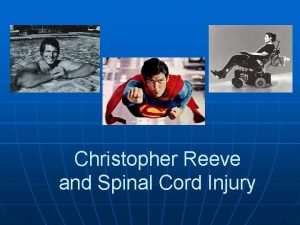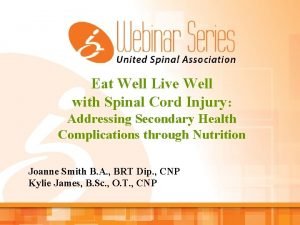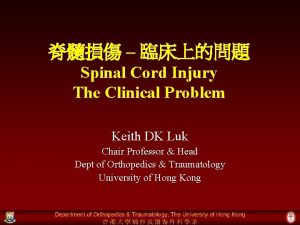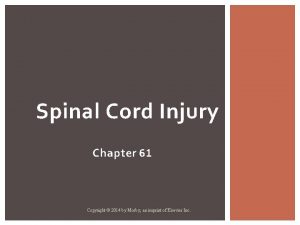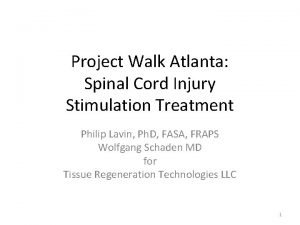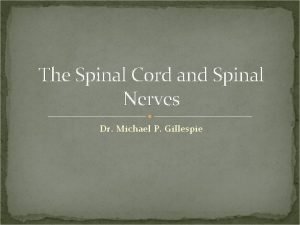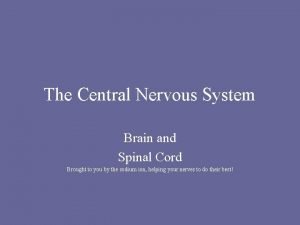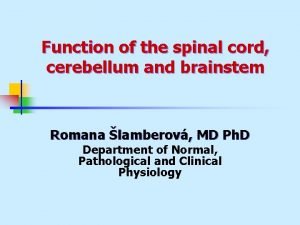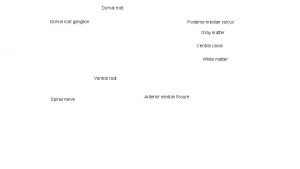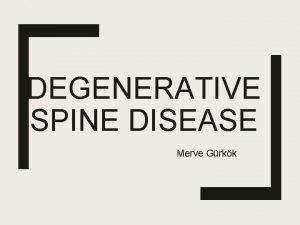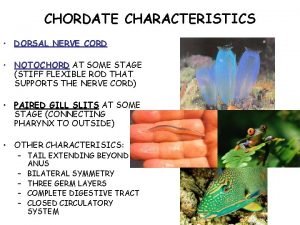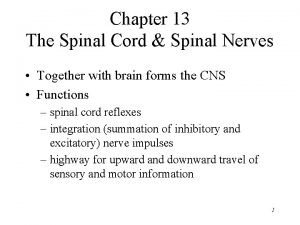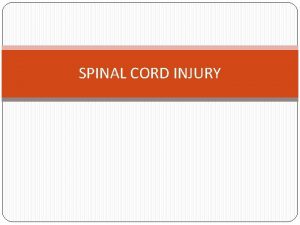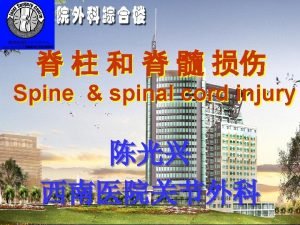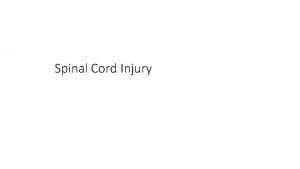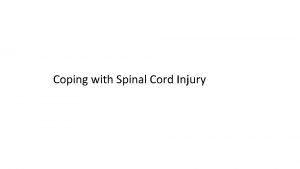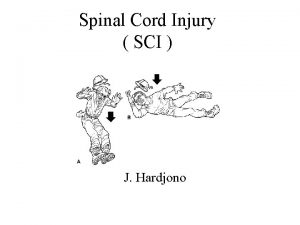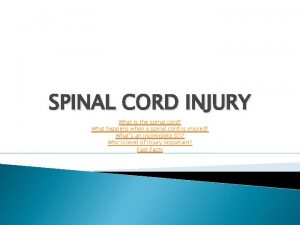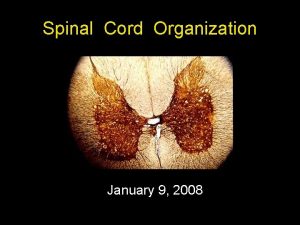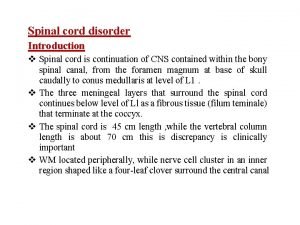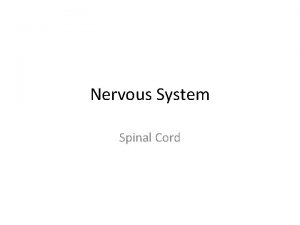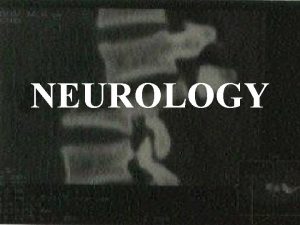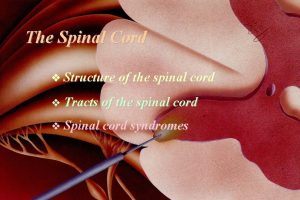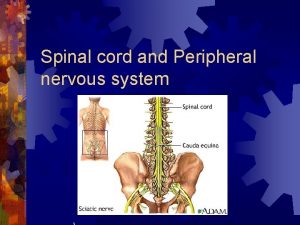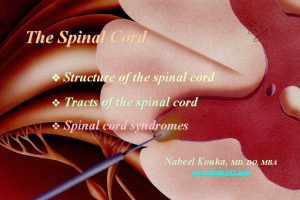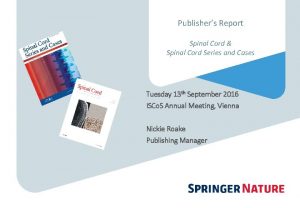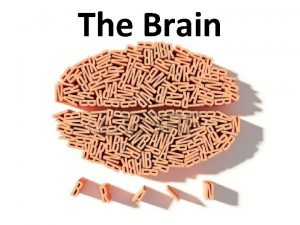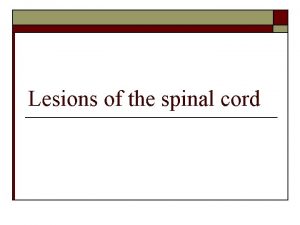Project Walk Atlanta Spinal Cord Injury Stimulation Treatment
























- Slides: 24

Project Walk Atlanta: Spinal Cord Injury Stimulation Treatment Philip Lavin, Ph. D, FASA, FRAPS Wolfgang Schaden MD for Tissue Regeneration Technologies LLC 1

Patient (n=10) Characteristics • • Gender: 6 M, 4 F Age range: 17 -73 years TSI range: 14 -112 months Injury Sites: • Injury type: Laminectomy: 9 N, 1 Y ASIA Score: 6 A, 4 B Para/Quad: 6 P, 4 Q Injury: • Lesion type: – C 3, C 5, C 6(2), C 7, T 3(3), T 4, T 10 • • – 6 Complete, 4 Incomplete – – – – – 5 moving vehicles 2 gunshots 1 diving 1 post-surgical 1 pedestrian 3 bruised 3 squeezed/crushed 2 ruptured 1 compression fracture 1 unknown 2

Treatment History • TRT stimulation completed: 10/10 • Time treated range: – 7 -39 wks (median 12. 5 wks) • # TRT treatments: – 5 -17 (median 10) • Total shocks (x 1000): – 21. 75 -72 (median 42. 45) • Highest energy (m. J/m 2): • All study therapy completed as planned • Otherapies: 4/10 – – 1 hyperbaric and IMT 1 hyperbaric 1 rehabilitation 1 stem cells • Physical therapy: – 4 -40 hrs (median 29 hrs) – 0. 13 -0. 23 (median 0. 14) 3

Project Walk Metric Improvement • Significant mean improvements (two-sided p=0. 004, sign test) relative to baseline # Baseline Exit Change TSI (m), Lesion Injury Site Injury Type 1 3 10. 5 +7. 5 83, Ruptured C 5 Q, Complete 2 12 16 +4 27, Bruised T 3 P, Complete 3 7 16 +9 15. Thermal T 3 P, Incomplete 4 13 NA NA 93, Bruised T 10 P, Complete 5 4 6 +2 112, Crushed C 3 Q, Incomplete 6 16 18 +2 38, Comp Fx C 6 Q, Incomplete 7 13 16 +3 27, Ruptured C 6 Q, Complete 8 16 20 +4 66, Squeezed T 3 P, Incomplete 9 11 14 +3 33, Bruised C 7 P, Complete 10 13 17 +4 14, Crushed T 4 P, Complete 4

Efficacy Scoring • • NA: Not applicable -2: Much worse relative to baseline -1: Worse relative to baseline 0: Same as baseline +1: Better than baseline +2: Much better than baseline +3: Returned to normal 5

Efficacy Measures • • • Spasticity Core Strength Core Movement Core Sensitivity Leg Muscle Mass Leg Extremity Strength Leg Extremity Movement Leg Extremity Sensitivity Leg Extremity Reflexes • • Bladder Function Bowel Function Sexual Function Lung and Diaphram Perspiration below injury Sensitivity to cold Nerve pain Wounds (not included) – Scar appearance – Chronic ulcers 6

Case Specific Best Improvements • Multi-dimensional improvements for all cases # Best 1 Lung/Diaph +3 2 Core Str +2 3 Leg Ex Se +2 4 Spasticity +2 5 6 Best 2 nd Best 3 rd 6 of 15 others +2 Core Mov +2 3 others +2 8 of 14 others +1 Leg Ex Mv +2 Leg Ex R +2 8 of 15 measures +1 Core Mov +2 6 of 14 others +1 TSI (m), Lesion Injury Type 83, Rupture Q, Complete 27, Bruised P, Complete 15. Missing P, Incomplete 93, Bruised P, Complete 112, Crushed Q, Incomplete 38, Comp Fx Q, Incomplete 7 8 of 15 measures +1 27, Rupture Q, Complete 8 6 of 14 measures +1 66, Squeezed P, Incomplete 9 2 of 16 measures +1 33, Bruised P, Complete 14, Crushed P, Complete 10 Lung/Diaph +3 Core S/M +2 All 5 Leg +2 7

Degree of Improvement (1) Efficacy Measure +3 +2 +1 0 Spasticity (2 rated -1) 0 1 3 3 Core Strength 0 3 5 2 Core Movement 0 4 3 3 Core Sensitivity 0 0 8 2 Leg Muscle Mass 0 2 2 6 Leg Extremity Strength 0 2 5 3 Leg Extremity Movement 0 3 4 3 Leg Extremity Sensitivity 0 2 4 4 Leg Extremity Reflexes 0 2 5 3 8

Degree of Improvement (2) Efficacy Measure +3 +2 +1 0 Bladder Function 0 0 1 9 Bowel Function 0 0 0 10 Sexual Function 0 1 0 9 Lung and Diaphram (4 NA) 2 0 2 2 Perspiration below injury 0 3 4 3 Sensitivity to cold 0 1 5 4 Nerve Pain (1 rated -1) 0 0 1 6 9

Best Overall Improvement (3) Efficacy Measure +3 +2 +1 0 Spasticity (2 rated -1) 0 1 3 3 Best Core Measure 0 4 6 0 Best Leg Measure 0 4 6 0 Best Function Measure 0 1 1 8 Lung and Diaphram (4 NA) 2 0 2 2 Perspiration below injury 0 3 4 3 Best Sensory Measure 0 3 5 2 Best Overall 2 4 4 0 10

Mean # Measures Improving Per Case • Multidimensional benefits as shown below: Measure Score Total Cases With At Least One Such Score Total # Measures With That Score Overall Average Per 10 Cases +3 2 2 0. 2 +2 6 24 2. 4 +1 10 52 5. 2 0 10 72 7. 2 -1 2 3 0. 3 11

Overall Efficacy Results Confidence • All patients experienced improvements • Lower 95% confidence bounds beyond chance Best Outcome Percent Achieving 95% Lower Bound +3 20% 5. 1% +2 or +3 60% 33. 6% +1 or +2 or +3 100% 74. 1% 12

Patient Self Assessment (1 -10) • 1 = baseline with 10 = total recovery • Favorable self-perception of improvement Rating Percent Achieving 95% Lower Bound At least 2 100% 74. 1% At least 3 90% 65. 0% At least 4 60% 33. 6% At least 5 50% 25. 1% At least 6 20% 5. 1% At least 7 10% 13

Correlations % Improvement: From DAS Baseline vs # Weeks Study 300% 0. 86 Correlation Coefficient 250% 200% 150% 100% 50% 0% 0 10 20 30 40 50 14

Correlations % Improvement: Survey vs. Total # of Shocks (X 1000) 45% 0. 79 Correlation Coefficient 40% 35% 30% 25% 20% 15% 10% 5% 0% 0 10 20 30 40 50 60 70 80 15

Correlations % Improvement: Survey vs of # of Treatments 45% 40% 0. 90 Correlation Coefficient 35% 30% 25% 20% 15% 10% 5% 0% 0 5 10 15 20 16

Correlations • Number of treatments, & more importantly, weeks since 1 st treatment are most significant factors for measurable improvements. Correlation Correl. to hrs. of Therapy Correl. to # of treatments Correl. to # of shock Correl. to wks. in study DAS Evaluation: Patient/Therapist % Improvement Survey: % from baseline to Improvement Normal Project Walk Baseline DAS Score Improvement % Patient Self Assessment: % Improvement to normal 0. 18 -0. 19 0. 03 0. 00 0. 90 0. 27 0. 22 0. 47 0. 79 0. 06 0. 02 0. 36 0. 47 0. 48 0. 86 0. 65 17

DATA • Median & Mean were similar for data sets • Most patients received low energy shocks Number of weeks in Study Number of Treatments Total # of Shocks Highest energy (mj/mm ^2) Hours of Therapy during study Final Project Walk evaluation MIN MAX Median Mean 7 39 13 14 5 21750 17 72000 10 42450 11 46000 0. 13 0. 23 0. 14 0. 17 4 40 29 26 6 20 16 15 18

What We Can Take from the Data • # of treatments, # of shocks, & weeks in study: Positive correlation for assessments • While relatively similar numbers of each for each patient, the small differences were key • Time since first treatment was most important • Positive correlation of at least 0. 47 for weeks in study, with independent evaluation = 0. 86 19

Wound Assessments • Wound healing was also observed for all wounds • Chronic ulcers healed for all 3 patients with chronic ulcers at baseline • Scar appearance improved for all 7 patients with scars; the other 3 patients did not have scars – much better (+2) for 2 patients – improved (+1) for 5 patients 20

Safety • 1 case (#3) had small bruises on their foot which was classified as mild and resolved • No cases had any distal adverse events 21

Moving Forward • All experienced improvement from baseline – Mean number of improvements: 0. 2 resolved, 2. 4 much better, and 5. 2 improved => 7. 8 per case • Multi-dimensional treatment benefit – 20% +3, 60% +2, and 100% +1 relative to baseline • 4 of 6 completes and 2 of 4 incompletes experienced +2 or +3 – Project Walk metric confirmation – Patient self assessment confirmation • No safety issues • All willing to continue treatment 22

The End 23

DATA • The Median & Mean were equivalent for virtually all forms of assessment • While treatments were relatively similar for each patient, all saw an improvement! MIN Patient/Therapist: % Improvement Independent: % Improvement Project Walk Improvement % Patient Self Assessment MAX Median Mean 4% 42% 20% 22% 5% 23% 10% 11% 13% 250% 31% 65% 20% 70% 45% 43% 24
 Exercise 15 spinal cord and spinal nerves
Exercise 15 spinal cord and spinal nerves Figure 13-2 spinal nerves
Figure 13-2 spinal nerves Median nerve innervates
Median nerve innervates Exercise 15 spinal cord and spinal nerves
Exercise 15 spinal cord and spinal nerves Christopher reeve spinal cord injury level
Christopher reeve spinal cord injury level Diet for spinal cord injury patient
Diet for spinal cord injury patient Christopher reeve ventilator
Christopher reeve ventilator Spinal cord injury shoulder exercises
Spinal cord injury shoulder exercises Spinal cord injury rehabilitation st. louis
Spinal cord injury rehabilitation st. louis Somi brace
Somi brace Project walk atlanta
Project walk atlanta Spinal cord denticulate ligament
Spinal cord denticulate ligament Hypothalamus
Hypothalamus Hyporeflexia and hyperreflexia
Hyporeflexia and hyperreflexia Spinal cord tumors
Spinal cord tumors Spinocerebellum
Spinocerebellum Ganglion dorsal root
Ganglion dorsal root Intervertebral disc prolapse
Intervertebral disc prolapse Notochord vs spinal cord
Notochord vs spinal cord Spinal cover
Spinal cover Substantia gelatinosa
Substantia gelatinosa Vestibulospinal tract
Vestibulospinal tract Spinal cord
Spinal cord Tethered cord
Tethered cord Function of spinal cord ppt
Function of spinal cord ppt




